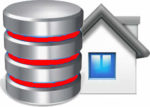What you need to know about Oracle Database architecture and features
This is the very popular Oracle book, Oracle Essentials by O’Reilly which is now in its 5th Edition and covers Oracle Database 12c.
The book contains over 400 pages, split into 15 chapters with 2 appendices. The 2 appendices cover what’s new in Oracle 12c and where to find these new features in the main body of the book, and the other appendix just provides a list of further resources.
The first chapter of the book tells you basically how the database works and all the various programs and software available from Oracle that make up Database 12c or that available in the Oracle software family.
The second chapter covers the Oracle architecture and discusses redo log files, control files, data files and table spaces as well as introducing the new pluggable databases feature.
Chapter three is about installing and running Oracle, this simply covers what to think about before you install Oracle, and decide what hardware you will need. This chapter then tells you how to start and stop the database as well as mentioning about using Oracle in the cloud.
Chapter Four is all about data structures, now if you have used Oracle for a while there is not really anything new in here for you. The usual suspects are discussed like data types, indexes, triggers, explain plans etc. There are a few points of note though for Oracle 12c, like the VARCHAR column can now be up to 32k. A RAW column can be 32k. Also mentioned are invisible columns which cannot be accessed by certain users.
Chapter Five is about managing Oracle, so it covers Enterprise Manager and about handling database backups. New features mentioned include the SQL Plan Management Evolve Advisor, ASM improvements and real-time ADDM which runs every 3 seconds so you can easily resolve deadlocks and hangs etc.
Chapter Six is about security and auditing of the Oracle database. This covers roles, privileges, policies and encryption of the database.
Chapter Seven covers performance and tuning, chapter eight is about multiuser concurrency and talks about workspaces and conflicting write operations and about concurrent access and performance.
Chapter Nine is about transaction processing, chapter ten data warehousing and business intelligence. Chapter eleven is about high availability and it talks about instance recovery, RAID, backup strategies etc. Chapter twelve is about Oracle hardware and talks about Oracle Exadata, Oracle SuperCluster. Chapter thirteen is about distributed databases and data. Chapter fourteen is about extended datatypes including Oracle Text, XML DB.
The final chapter covers something a bit newer in 12c which is Oracle and the Cloud.
Overall this is a very good book, and always has been. Now it’s updated with mentions of the new Oracle 12c features as well. If you are a seasoned Oracle professional then you may just want to learn about what’s new in Oracle 12c, for this you may just go straight to Appendix A and find where the new features of Oracle 12c are in the book and just read those sections. If you are new to Oracle you will find Oracle Essentials a good overall read, and you gain a good overview about the Oracle Database.
But please don’t expect more than an overview of the Oracle database from this book, as there are no code examples in this book. Look elsewhere if you want to actually use, practice and play with the new features in Oracle 12c.

